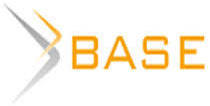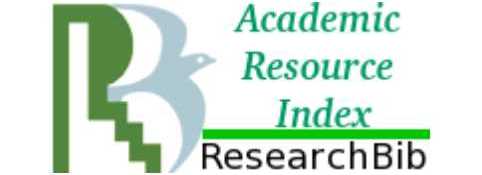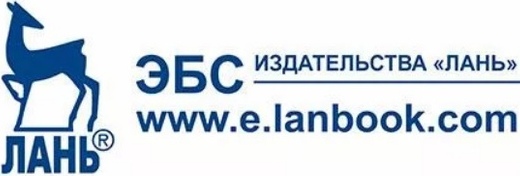Dynamics of regional disparities in the development of the Serbian tourism industry in 2000-2023
Serbia is one of the leaders in Southeast Europe in terms of the speed of recovery of the tourism industry in the post-pandemic period. Thus, according to UNWTO, the volume of tourism receipts in the country's budget in 2023 compared to 2019 increased by 79% and the number of visitors by 15%. Such growth rates were ensured both by an active communication policy, marketing and significant investments in the country's tourism and transportation infrastructure, as well as by the residual reorientation of locals to domestic tourism and a significant inflow of foreign tourists, including from Russia. However, within the country there is a strong imbalance between regions attracting mainly domestic tourists and regions specializing in international tourism. Hence the different degree of influence of the tourism sector on the economy of these two types of regions, and, in general, the uneven speed of recovery of the tourism industry within the country. Based on the data of the Statistical Office of the Republic of Serbia, the article analyzes the indicators of the development of its domestic and inbound tourism, including the change in the places of key tourist "donor" countries, estimates the contribution of tourism to the economy of four macro-regions of Serbia (Belgrade County, Vojvodina, Sumadija and Western Serbia, Southern and Eastern Serbia) and concludes that the contribution of tourism is higher for the regions specializing in international tourists, even if the volume of tourist traffic is lower. In addition, the impact of geopolitical instability in Eastern Europe on the tourism industry of Serbia is examined in the aspect of turning the country into a migration and transportation hub for citizens of Belarus and Russia. The development of the tourism industry in collaboration of authorities, businesses and local residents, as well as the identification of the most effective tools to stimulate tourist flow and create a favorable institutional environment for the emergence of new companies in the tourism sector - all this is one of the key tasks of practice-oriented researchers of the tourism sector. The successful and not so successful experience of attracting international tourists to the regions of Serbia discussed in this article can be a guide for stimulating and developing inbound tourist flows for other countries, a significant part of which in the covid period reoriented to domestic tourist flows.
Ashirova, O. I., Popov, G. E., Mizerovskaya, U. V. and Denisov, D. M. (2025), “Dynamics of regional disparities in the development of the Serbian tourism industry in 2000-2023”, Research Result. Business and Service Technologies, 11 (1), pp. 4-23. DOI: 10.18413/2408-9346-2025-11-1-0-1
















While nobody left any comments to this publication.
You can be first.
Autonomous Province of Vojvodina. [Online], available at: https://www.vojvodina.gov.rs/en/vojvodina/o-vojvodini (Accessed 29 August 2024).
Đerčan, B., Gatarić, D., Bubalo Živković, M. et al. (2023), “Evaluating Farm Tourism Development for Sustainability: A Case Study of Farms in the Peri-Urban Area of Novi Sad (Serbia)”, Sustainability, 15, p. 12952.
Development in the urban era: six strategies for better managing urbanisation in Asia and the Pacific. [Online], available at: https://apo.org.au/node/218711 (Accessed 29 August 2024).
GDP (current US$) – Serbia. [Online], available at: https://data.worldbank.org/indicator/NY.GDP.MKTP.CD?locations=RS
(Accessed 29 August 2024).
Get to Know Serbia. [Online], available at: https://www.srbija.gov.rs/tekst/en/130160/tourism.php (Accessed 29 August 2024).
Handbook of Sustainable Urban Development Strategies. [Online], available at: https://urban.jrc.ec.europa.eu/urbanstrategies/strategic-dimensions (Accessed 29 August 2024).
Largest companies in Serbia in 2021, by revenue. [Online], available at: https://www.statista.com/statistics/1317494/serbia-largest-companies-by-revenue / (Accessed 29 August 2024).
Latest data on the number of foreign tourists in Serbia (2023). [Online], available at: https://take-profit.org/statistics/tourist-arrivals/serbia/ (Accessed 29 August 2024).
Mitrović, P. (2024), “Ekonomska kriza i konvergencija regionalnih dispariteta”, Balkan Synthesis, 2, pp. 29–39.
Marcikić Horvat, A. and Sedlak, O. (2022), “Investments in tourist destinations for increasing efficiency in the future Serbian tourism sector”, Tourism International Scientific Conference Vrnjačka Banja – TISC, 7(1), pp. 63–76.
Ministry of Tourism of Serbia (2024). [Online], available at: https://www.serbia.travel/ru (Accessed 29 August 2024).
Pavluković, V., Kovačić, S., Pavlović, D. et al. (2024), “Tourism destination competitiveness: An application model for Serbia”, Journal of Vacation Marketing.
Penjišević, I., Lukić, T., Milosavljević, S. et al. (2024), “Sustainable Tourism near the City – A Case Study of Stolovi Mountain, Serbia”, Sustainability, 16, p. 782.
Perić, G., Dramićanin, S. and Conić, M. (2021), “The impact of Serbian tourists’ risk perception on their travel intentions during the COVID-19 pandemic”, European Journal of Tourism Research, 27, p. 2705.
Process and Results 2004-2008. [Online], available at: https://documents1.worldbank.org/curated/en/945091468026411178/pdf/703370ESW0P089020080Updated0July010.pdf (Accessed 29 August 2024).
Serbia - Country Commercial Guide. [Online], available at: https://www.trade.gov/country-commercial-guides/serbia-market-overview (Accessed 29 August 2024).
Serbia is the world leader in terms of growth in tourism revenue (2023). [Online], available at: https://balkanist.ru/serbiya-mirovoj-lider-po-pokazatelyu-rosta-dohodov-ot-turizma/ (Accessed 29 August 2024).
Serbia: Unemployment rate from 2004 to 2023. [Online], available at: https://www.statista.com/statistics/440532/unemployment-rate-in-serbia/ (Accessed 29 August 2024).
Serbia. [Online], available at:https://www.serbia.travel/en (Accessed 29 August 2024).
Serbia. Membership status: candidate country. [Online], available at: https://neighbourhood-enlargement.ec.europa.eu/enlargement-policy/serbia_en (Accessed 29 August 2024).
Serbia’s labour costs lowest in Europe, much below the EU average. [Online], available at: https://www.euractiv.com/section/politics/news/serbias-labour-costs-lowest-in-europe-much-below-the-eu-average/ (Accessed 29 August 2024).
Siciliano, G. (2012), “Urbanization strategies, rural development and land use changes in China: A multiple-level integrated assessment”, Land Use Policy, 29 (1), pp. 165–178.
Stat.gov. [Online], available at: https://publikacije.stat.gov.rs/G2024/Pdf/G202410127.pdf (Accessed 29 August 2024).
Statistical Office of the Republic of Serbia (2022). [Online], available at: https://www.stat.gov.rs/en-us/oblasti/ugostiteljstvo-i-turizam/turizam/ (Accessed 29 August 2024).
Statistical Office of the Republic of Serbia (2022). [Online], available at: https://data.stat.gov.rs/Home/Result/220201?languageCode=en-US (Accessed 29 August 2024).
Statistical Release. [Online], available at: https://www.icty.org/en/about/what-former-yugoslavia/conflicts (Accessed 29 August 2024).
Statistical Release. [Online], available at: https://www.stat.gov.rs/en-us/vesti/statisticalrelease/?p=15146 (Accessed 29 August 2024).
Sustainable urban development – strategies for modern cities. [Online], available at: https://nclurbandesign.org/sustainable-urban-development-strategies-for-modern-cities/ (Accessed 29 August 2024).
Sustainable Urbanization Strategy. [Online], available at: https://www.undp.org/publications/sustainable-urbanization-strategy (Accessed 29 August 2024).
Vukosav, S., Bradić, M. and Blagojević, S., (2009), “The improvement of the accommodation offer in Vojvodina: Serbia as a factor of its competitiveness on the market”, TURIZAM, 13 (2), pp. 84–91.
The strategic framework in the Republic of Serbia. [Online], available at: https://socijalnoukljucivanje.gov.rs/en/social-inclusion-in-rs/strategic-framework-in-rs/ (Accessed 29 August 2024).
Tourism and recreational complex of the Republic of Serbia. [Online], available at: https://natural-sciences.ru/ru/article/view?id=37437 (Accessed 29 August 2024).
Trišić, I., Nechita, F., Ristić, V., et al. (2023), “Sustainable Tourism in Protected Areas – The Case of the Vršac Mountains Outstanding Natural Landscape, Vojvodina Province (Northern Serbia)”, Sustainability, 15, p. 7760.
The publication was made within the framework of the project №060509-0-000 of the RUDN grant support system.